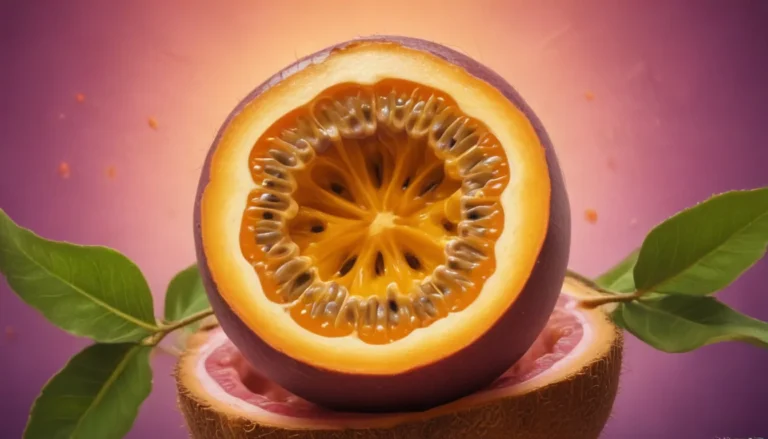
When you think of Christmas treats, candy canes probably come to mind. These festive striped sweets are more than just tasty – they hold deeper spiritual meaning. The candy cane’s shape and colors have long been associated with Christian symbolism, making it a powerful holiday icon. But even for those who aren’t religious, candy canes can represent the spirit of giving, joy, and sweetness that defines the season. Let’s unwrap the fascinating history and significance behind this beloved holiday treat.
As we explore the spiritual meaning of candy canes, we’ll discover how this simple confection became intertwined with Christmas traditions. From its humble origins to its modern popularity, the candy cane has quite a story to tell. Whether you hang them on your tree, use them to decorate gingerbread houses, or simply enjoy their minty flavor, understanding the symbolism can add an extra layer of meaning to your holiday celebrations.
Key Takeaways:
- Candy canes have a rich history tied to Christian symbolism
- The shape and colors of candy canes hold spiritual significance
- Even non-religious people can find meaning in candy cane traditions
- Understanding candy cane symbolism can deepen holiday appreciation
- Candy canes represent themes of purity, sacrifice, and joy
The Origins of the Candy Cane

Let’s start our journey by looking at where candy canes came from. The exact origin is a bit fuzzy, with several competing stories. One popular legend claims that in 1670, a choirmaster in Cologne, Germany created the first candy cane. He supposedly bent straight white candy sticks into a shepherd’s crook shape to keep children quiet during long church services. The shape was meant to remind kids of the shepherds who visited baby Jesus.
Another tale sets the candy cane’s birth in Indiana in the 1800s. A candy maker wanted to make a Christmas treat that represented Jesus. He started with a white stick candy (representing purity) and added red stripes (for Jesus’s sacrifice). The “J” shape was meant to stand for “Jesus” and could also represent a shepherd’s staff.
While we can’t know for sure which story is true, we do know that by the 1900s, candy canes were firmly established as a Christmas tradition. They’ve been getting more colorful and flavorful ever since!
Unpacking the Symbolism
Now that we know a bit about where candy canes came from, let’s look deeper at what they might mean. Remember, symbolism can be personal – you might find your own special meaning in these treats!
The Shape
The most obvious feature of a candy cane is its distinctive “J” shape. Here are some ways people interpret this:
- Shepherd’s Staff: It reminds us of the shepherds who came to see baby Jesus. This connects to ideas of guidance and care.
- Letter J: For “Jesus”, making the candy a sweet reminder of the reason for the season.
- Walking Stick: Some see it as a way to remember the long journey Mary and Joseph took to Bethlehem.
What do you think when you see the candy cane’s curve? Does it make you think of any of these ideas, or something else entirely?
The Colors
Traditional candy canes are white with red stripes. These colors aren’t just pretty – they’re packed with meaning:
- White: Represents purity and the sinless nature of Jesus.
- Red: Symbolizes the blood of Christ and his sacrifice.
Some people see the white as the holiness of Jesus and the red as the love he showed by dying for others. It’s a powerful message in such a small package!
The Flavor
Most candy canes are peppermint flavored. While this might just be because it’s a refreshing taste, some find meaning here too:
- Hyssop Plant: In the Bible, hyssop is used for purification. The minty flavor reminds some of this cleansing herb.
- Sweet and Strong: Just like the mix of sugar and peppermint oil, faith can be both comforting and powerful.
Have you ever thought about why candy canes taste the way they do? Does knowing these ideas change how you think about them?
Beyond Christian Symbolism

While candy canes have strong ties to Christian symbolism, their meaning has expanded over time. Today, people of all backgrounds can find significance in these sweet treats. Here are some universal themes candy canes might represent:
- Generosity: Candy canes are often given as small gifts or used to decorate presents. They remind us of the joy of giving.
- Childhood Wonder: For many, the sight of a candy cane brings back happy memories of Christmas past.
- Community: Sharing candy canes or decorating with them together can be a bonding experience.
- Sweetness in Winter: In the cold months, candy canes offer a burst of sweet cheer.
- Tradition: Whether religious or not, candy canes have become a beloved part of holiday customs for many families.
How do candy canes fit into your holiday traditions? Do they hold any special meaning for you or your loved ones?
Candy Canes Around the World
While we often think of candy canes as an American tradition, they’ve spread far and wide. Let’s take a quick tour of how different cultures have embraced or adapted the candy cane:
| Country | Candy Cane Tradition |
|---|---|
| Germany | Original birthplace, often used to decorate trees |
| Sweden | Called “polkagris”, comes in many flavors |
| Japan | Popular Christmas gift, sometimes in unusual flavors like sushi |
| Australia | Used in Christmas crafts, adapted for summer holidays |
| UK | Often used in holiday baking and as tree decorations |
It’s fascinating to see how a simple candy has traveled the globe, picking up new meanings and traditions along the way. Have you ever tried a candy cane from another country? How was it different?
Modern Twists on Tradition
While the classic red and white peppermint candy cane remains a holiday staple, candy makers have gotten creative in recent years. Now you can find candy canes in all sorts of colors and flavors. Some examples include:
- Fruit flavors like cherry, orange, and blueberry
- Sweet treats like chocolate, cotton candy, and birthday cake
- Savory surprises like pickle and bacon
- Character-themed canes featuring popular movies and TV shows
These new varieties show how traditions can evolve while keeping their core spirit. The shape remains the same, carrying its symbolic weight, but the colors and flavors offer something for every taste.
This evolution raises some interesting questions. Does changing the color or flavor of a candy cane change its meaning? Or is the shape alone enough to carry the tradition? What do you think – do you prefer the classic candy cane, or are you excited to try new flavors?
Candy Canes in Popular Culture

Candy canes have made their mark beyond the holiday aisle. They’ve become a symbol of Christmas in movies, TV shows, and books. Think about how often you see giant candy canes as part of Christmas decorations in films. Or consider the famous line from the movie “Elf”: “We elves try to stick to the four main food groups: candy, candy canes, candy corns, and syrup.”
In literature, candy canes often represent the magic and wonder of the holiday season. They appear in countless children’s Christmas stories, often as magical items or important plot devices.
This prevalence in pop culture has cemented the candy cane’s place as a holiday icon. Even for those who don’t celebrate Christmas religiously, candy canes signal that the festive season has arrived.
How many candy cane references can you spot in your favorite holiday movies or books? Next time you watch or read, keep an eye out – you might be surprised how often they appear!
Crafting with Candy Canes
One of the reasons candy canes have stayed so popular is their versatility. Beyond eating them, people use candy canes in all sorts of creative ways. Here are a few ideas you might want to try:
- Candy Cane Hearts: Arrange two candy canes to form a heart shape. Use as ornaments or gift toppers.
- Candy Cane Reindeer: Turn a candy cane upside down, add googly eyes and a red pom-pom nose to make Rudolph.
- Candy Cane Vase: Attach candy canes around a glass vase for a festive flower holder.
- Candy Cane Candle: Glue candy canes around a plain pillar candle for a sweet-smelling decoration.
- Candy Cane Wreath: Arrange candy canes in a circle, tie with a ribbon, and hang on your door.
These crafts can be a fun way to spend time with family or friends during the holiday season. They also let you engage with the symbolism of candy canes in a hands-on way. As you create, you might find yourself reflecting on what the candy cane means to you.
What’s your favorite way to use candy canes? Have you ever made any candy cane crafts?
The Future of Candy Canes
As we wrap up our exploration of candy canes, let’s think about their future. Will they always be a part of Christmas traditions? How might they change?
Some trends we’re seeing:
- More eco-friendly packaging options
- Increased variety in flavors and colors
- Use of natural dyes and flavors
- Sugar-free and vegan options for those with dietary restrictions
Despite these changes, the core symbolism of the candy cane seems likely to endure. Its simple shape and traditional colors carry so much meaning for so many people.
As we move forward, candy canes might take on new significance. Perhaps they’ll become symbols of environmental responsibility as manufacturers focus on sustainability. Or maybe they’ll represent inclusivity as more dietary options become available.
What do you think candy canes will look like in 50 years? How do you hope the tradition will continue or change?
Conclusion
From their mysterious origins to their place in modern pop culture, candy canes have quite a story to tell. Whether you see them as symbols of Christian faith, reminders of childhood joy, or simply tasty treats, candy canes have a special place in holiday traditions around the world.
As you enjoy candy canes this season, take a moment to reflect on what they mean to you. Maybe you’ll see them in a new light, or perhaps you’ll start a new candy cane tradition of your own. Whatever the case, may your holidays be as sweet as these iconic striped treats!





